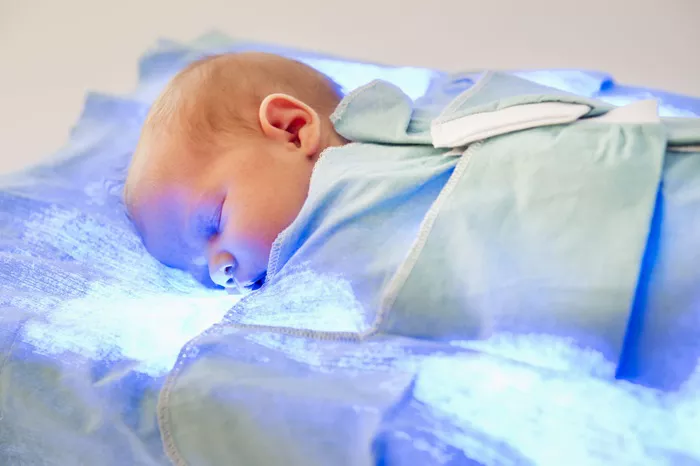Newborn jaundice is a common condition characterized by the yellowing of a baby’s skin and eyes. While it often resolves on its own, it can sometimes indicate underlying health issues that require prompt attention. In this comprehensive guide, we’ll delve into the various aspects of newborn jaundice, from its causes and symptoms to its potential dangers and treatment options. By the end, you’ll have a clear understanding of why timely intervention is crucial in managing this condition and safeguarding the health of newborns.
Overview of Newborn Jaundice
Jaundice in newborns occurs when there’s an excess of bilirubin in the blood. Bilirubin is a yellow pigment produced during the normal breakdown of red blood cells. In newborns, the liver is still developing, making it less efficient at processing bilirubin, which can lead to its accumulation in the bloodstream. This excess bilirubin causes the characteristic yellowing of the skin and whites of the eyes, known as jaundice.
Causes of Jaundice
There are various reasons why newborns may develop jaundice. Physiological jaundice, the most common type, typically appears a few days after birth and is a result of the normal breakdown of red blood cells. However, other factors can contribute to jaundice in newborns, including blood type incompatibilities between the mother and baby, such as Rh or ABO incompatibility, as well as conditions like Gilbert syndrome or infections.
Symptoms to Watch For
Recognizing the signs of jaundice is crucial for early detection and intervention. The primary symptom is yellowing of the skin and eyes, which may begin on the face and then spread downward. In some cases, the yellow discoloration may be accompanied by lethargy, poor feeding, or a high-pitched cry. Healthcare providers typically assess jaundice by gently pressing on the baby’s forehead or nose to check for yellowish discoloration.
Potential Dangers
While jaundice is often harmless and resolves without intervention, high levels of bilirubin can pose risks, particularly to the developing brain. In severe cases, a condition known as kernicterus can occur, characterized by bilirubin-induced brain damage. Kernicterus is rare but can result in long-term neurological complications, including hearing loss, cerebral palsy, and developmental delays. Timely monitoring and treatment are essential for preventing such complications.
Treatment Options
The treatment approach for newborn jaundice depends on various factors, including the baby’s age, overall health, and bilirubin levels. Phototherapy is the most common treatment, involving exposure to special lights that help break down bilirubin in the skin. In more severe cases or when phototherapy isn’t effective, other treatments such as exchange transfusion may be necessary to rapidly lower bilirubin levels.
Prevention and Monitoring
While not all cases of newborn jaundice can be prevented, there are steps that healthcare providers can take to minimize the risk and monitor bilirubin levels closely. For example, assessing maternal and neonatal blood type compatibility during prenatal care can identify potential risks early on. Additionally, monitoring bilirubin levels in the first few days after birth, especially in babies at higher risk, allows for timely intervention if levels become elevated.
When to Seek Medical Advice
Parents and caregivers should be vigilant about observing signs of jaundice in newborns and seek medical advice if they notice any concerning symptoms. It’s particularly important to seek prompt medical attention if jaundice appears within the first 24 hours after birth, if it worsens or spreads rapidly, or if the baby becomes lethargic or refuses to feed. Healthcare providers can perform bilirubin tests and assess the need for further evaluation or treatment.
In conclusion, while newborn jaundice is a common and usually benign condition, it’s essential to recognize the potential dangers associated with it, particularly when bilirubin levels become elevated. By understanding the causes, symptoms, and risks of jaundice, parents, caregivers, and healthcare providers can work together to ensure timely intervention and safeguard the health and well-being of newborns. Vigilance, early detection, and appropriate treatment are key in preventing complications and promoting optimal outcomes for infants affected by jaundice.


